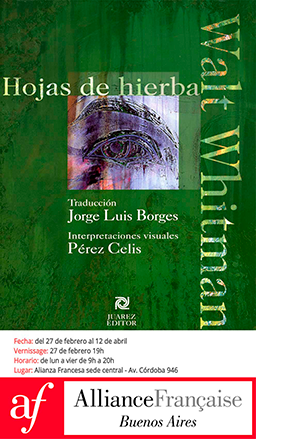A GUIDE FOR PRACTICING DISOBEDIENCE
Disobedience Archive is a video archive project in constant transformation, linking artistic practices and political action. At the Venice Biennale exhibition, it takes the form of The Zoentrope, a pre-cinematographic machine that gives life to a space that generates new perspectives.
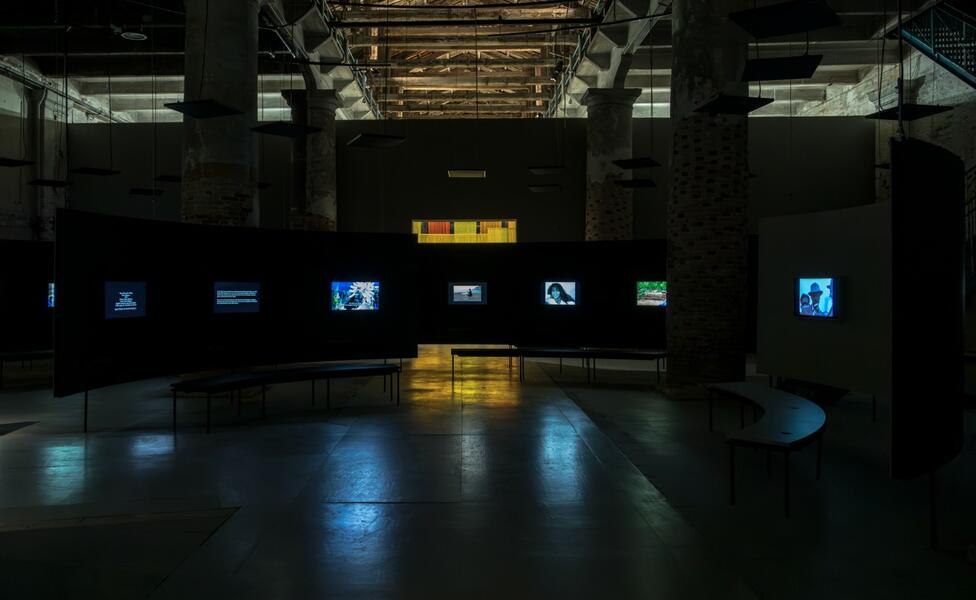
Presented in different countries since 2005, Disobedience Archive mutates, renews cycles, adopts new forms. On the occasion of the Venice Biennale exhibition, it is incorporated into The Zoetrope, a pre-filmic machine with the ability to animate images, and presents two sections that include forty films: Activism in the Diaspora and Gender Disobedience. This is a project by Marco Scotini, created with Arnols Braho, Andris Brinkmanis and Lilia Di Bella.
The archive as a whole is understood as a field in dispute, with diverse voices sharing the same cadence. Disobedience Archive has a rhythm, an open score with tensions and resistances that invites reflection on the ways in which collective memories are organized. The way they operate, always in dispute, always unfinished.
Resignifying disobedience, in this context, may imply resisting the idea of the archive as a record that does not admit questioning. Disobedience is proposed as an active methodology to complexify our way of understanding the past and, also, the mechanisms through which we build the present.
-
Disobedience Archive – Marco Scotini. Photo: Marco Zorzanello. Courtesy: La Biennale di Venezia
-
Disobedience Archive – Marco Scotini. Photo: Marco Zorzanello. Courtesy: La Biennale di Venezia
-
Disobedience Archive – Marco Scotini. Photo: Marco Zorzanello. Courtesy: La Biennale di Venezia
-
Disobedience Archive – Marco Scotini. Photo: Marco Zorzanello. Courtesy: La Biennale di Venezia
-
Disobedience Archive – Marco Scotini. Photo: Marco Zorzanello. Courtesy: La Biennale di Venezia
Seba Calfuqueo's work, You will Never Be a Weye, delves into the ancestral Mapuche culture and the figure of the Machi Weyes, non-binary spiritual and gender identities that were banished during colonization. In his video performance he recovers this identity, where he pays homage to his ancestors and denounces the colonial violence that tried to erase them from history. Carlos Motta's Nefandus also investigates, as a "historian of forgotten narratives", the repression of indigenous sexuality during the colonial period.
In turn, María Galindo and the Mujeres Creando collective, with her work Revolución Puta (Whore Revolution), brings a radical cinematographic language, where she gives voice to sex workers in Bolivia. Disobedience becomes an act of creation, a different way of inhabiting the world.
Pedro Lembel's work is configured within post-dictatorial Chile. In the archive, his work highlights how queer identity and dissident bodies defy imposed norms, creating a parallel memory that subverts historical obedience. At the Disobedience Archive, the artist underscores the importance of resisting the invisibilization of marginalized lives, rescuing histories that would otherwise be forgotten.
In that way, Disobedience Archive proposes obedience not only as a rejection of power, but also as an active practice of rewriting and proposition.
May interest you
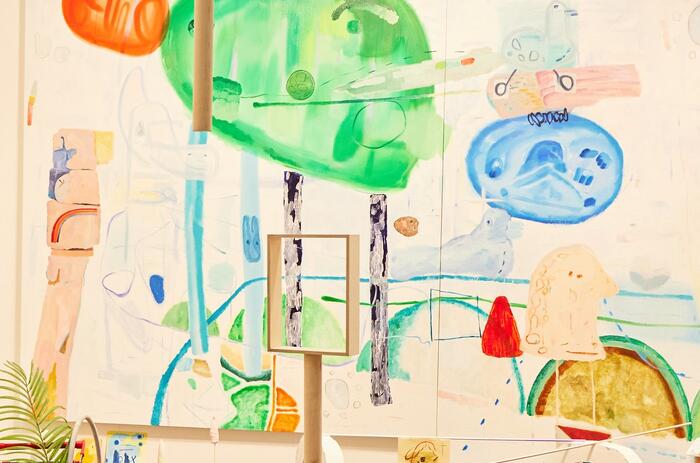
The first half of the year concluded on a low note, and as the art market gets ready to gear up for the last semester, a clearer picture of the challenges faced is emerging.
THE START OF THE SEASON
The first half of the year concluded on a low note, and as the art market gets ready to gear up for the last semester, a clearer picture of the challenges faced is emerging.

The first half of the year concluded on a low note, and as the art market gets ready to gear up for the last semester, a clearer picture of the challenges faced is emerging.
THE START OF THE SEASON
The first half of the year concluded on a low note, and as the art market gets ready to gear up for the last semester, a clearer picture of the challenges faced is emerging.
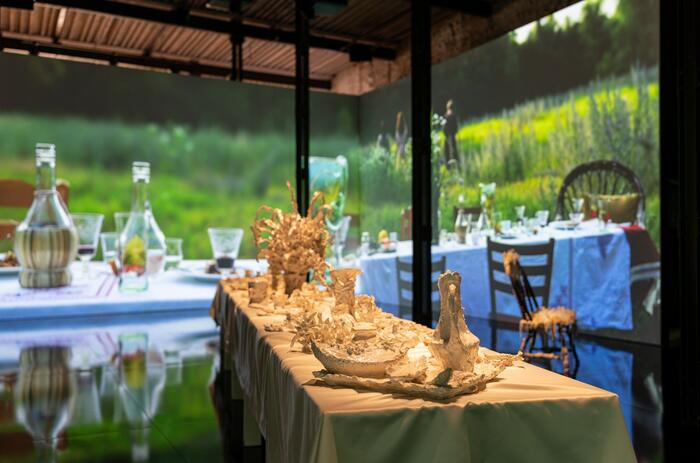
The Mexico Pavilion at the Venice Biennale 2024 proposes an immersive experience that invites the viewer to reflect on the act of migrating and its impact on identity and sense of belonging. As we marched away, we were always coming back is Erick Meyenberg's project curated by Tania Ragasol. It includes elements created in Mexico, Italy and Albania.
THE PATH OF MEMORIES – MEXICO AT THE BIENNALE
The Mexico Pavilion at the Venice Biennale 2024 proposes an immersive experience that invites the viewer to reflect on the act of migrating and its impact on identity and sense of belonging. As we marched away, we were always coming back is Erick Meyenberg's project curated by Tania Ragasol. It includes elements created in Mexico, Italy and Albania.
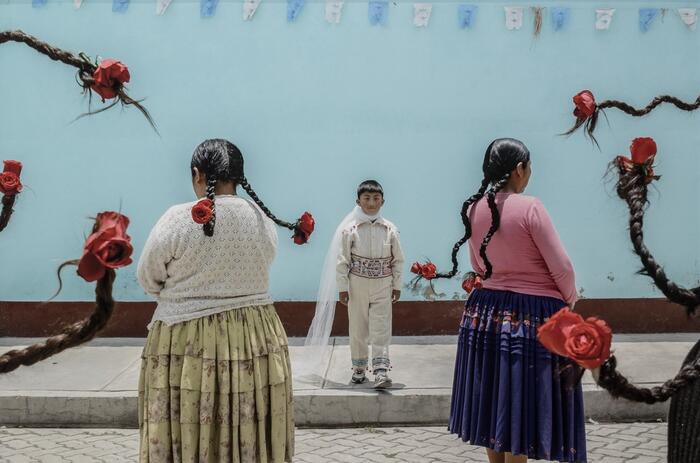
Why highlight stories that often remain on the periphery of artistic discourse? Adriano Pedrosa justifies his curatorial decision with works by 331 artists -mostly from the global south- that open the way to powerful narratives. Finally, we see the axis being twisted. It is difficult to escape the white gaze, more so to move authentically through a Eurocentric space. Given this, the communicative reach of figuration serves to challenge the symbolic order of domination and destabilize the colonial project. The stories that are made explicit and the narratives of magic and everyday life help to recognize without revictimizing.
STORIES FROM THE SOUTH – THE VENICE BIENNALE TURNS AROUND ITS AXIS
Why highlight stories that often remain on the periphery of artistic discourse? Adriano Pedrosa justifies his curatorial decision with works by 331 artists -mostly from the global south- that open the way to powerful narratives. Finally, we see the axis being twisted. It is difficult to escape the white gaze, more so to move authentically through a Eurocentric space. Given this, the communicative reach of figuration serves to challenge the symbolic order of domination and destabilize the colonial project. The stories that are made explicit and the narratives of magic and everyday life help to recognize without revictimizing.
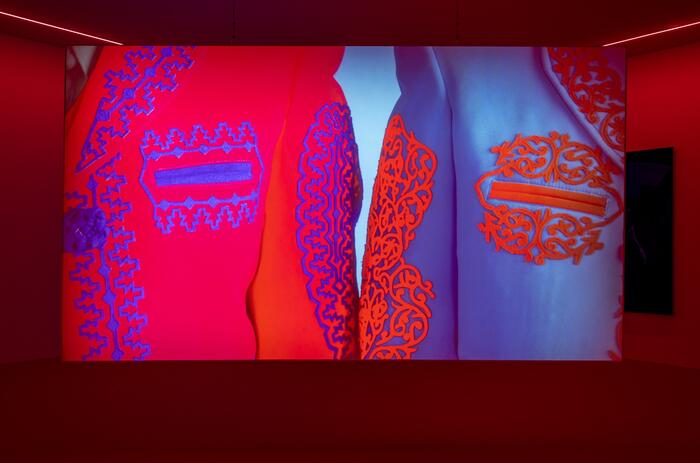
The voices of Latin American artists emerge strongly in this 2024 edition of the Venice Biennale. Claudia Alarcón, Julia Isídrez and Juana Marta Rodas, Ana Segovia, Frieda Toranzo Jaeger and Claudia Andújar lead viewers on a profound journey through their cultural heritage and unique artistic practices.
FIVE LATIN AMERICAN ARTISTS EXHIBITING FOR THE FIRST TIME AT THE VENICE BIENNALE
The voices of Latin American artists emerge strongly in this 2024 edition of the Venice Biennale. Claudia Alarcón, Julia Isídrez and Juana Marta Rodas, Ana Segovia, Frieda Toranzo Jaeger and Claudia Andújar lead viewers on a profound journey through their cultural heritage and unique artistic practices.
It takes an Island to Feel this Good is Darja Bajagić’s exhibition for the Montenegro pavilion at Venice Biennale 2024. Curated by Ana Simona Zelenović and organized by the Museum of Contemporary Art of Montenegro at the initiative of commissioner Vladislav Šćepanović, the exhibition will present a critical consideration of the culture of collective memory and the relationship to shared historical heritage.
ICONOGRAPHY, MEMORY AND HISTORY - THE MONTENEGRO PAVILION
It takes an Island to Feel this Good is Darja Bajagić’s exhibition for the Montenegro pavilion at Venice Biennale 2024. Curated by Ana Simona Zelenović and organized by the Museum of Contemporary Art of Montenegro at the initiative of commissioner Vladislav Šćepanović, the exhibition will present a critical consideration of the culture of collective memory and the relationship to shared historical heritage.
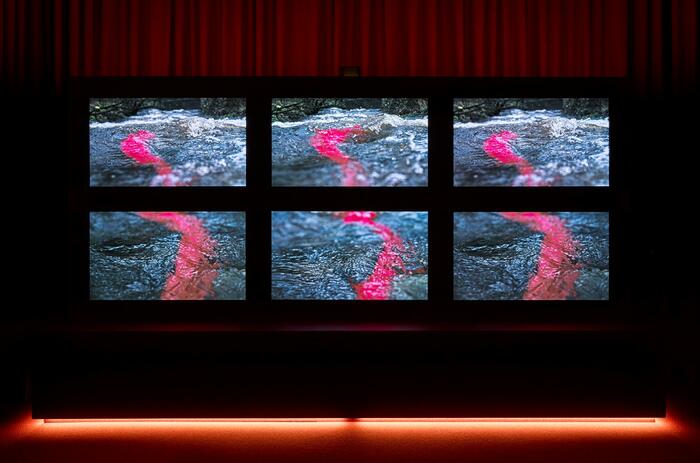
The monumental commission by British artist John Akomfrah RA for the 2024 Venice Biennale is a multi-layered exhibition which encourages visitors to experience the British Pavilion’s 19th century neoclassical building in a new way.
THE SOUNDS OF TIME – UNITED KINGDOM AT THE VENICE BIENNALE
The monumental commission by British artist John Akomfrah RA for the 2024 Venice Biennale is a multi-layered exhibition which encourages visitors to experience the British Pavilion’s 19th century neoclassical building in a new way.
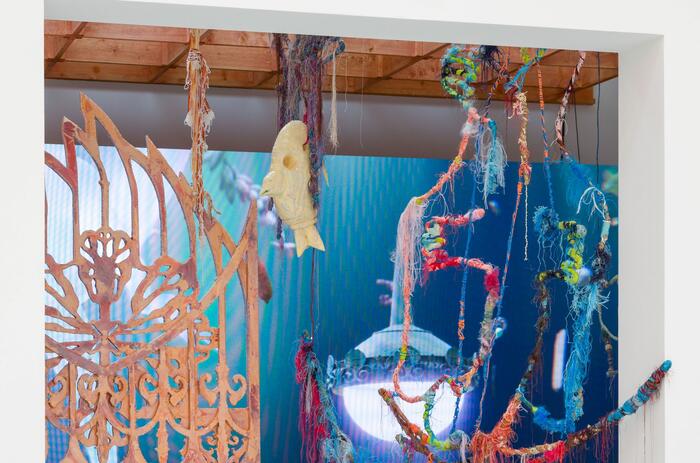
The 2024 Venice Biennale has taken a profound interest on cyclical themes, with water emerging as a dominant motif across exhibitions. In resonance to Pedrosa’s title for this year ‘Stranieri Ovunque’, we see water as a dominant locus for the subjects of travel, shared heritage and fluctuation. On itself, water is seen (as both a vital resource and a destructive force) at the heart of the pavilions representing Greece, France, and in Otero Torres’ Arsenale installation, Aguacero. These exhibitions delve into water’s duality: as a life-giver and a potential destroyer, as a symbol of both division and connection.
WATER, CYCLES AND TRANSFORMATION AT THE VENICE BIENNALE
The 2024 Venice Biennale has taken a profound interest on cyclical themes, with water emerging as a dominant motif across exhibitions. In resonance to Pedrosa’s title for this year ‘Stranieri Ovunque’, we see water as a dominant locus for the subjects of travel, shared heritage and fluctuation. On itself, water is seen (as both a vital resource and a destructive force) at the heart of the pavilions representing Greece, France, and in Otero Torres’ Arsenale installation, Aguacero. These exhibitions delve into water’s duality: as a life-giver and a potential destroyer, as a symbol of both division and connection.
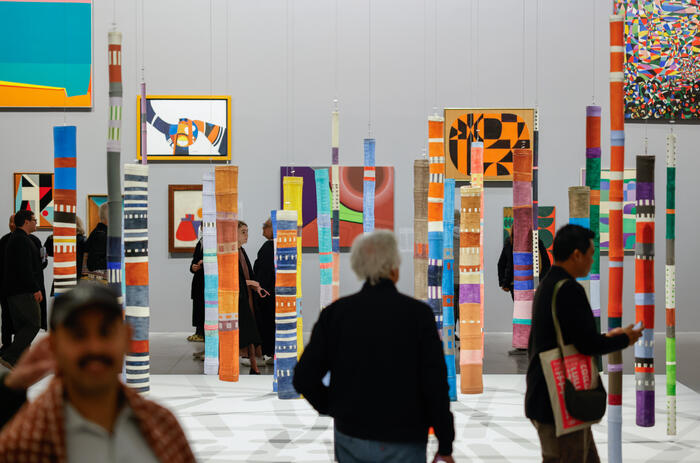
The section dedicated to abstraction in the Strangers Everywhere / Stranieri Ouvunque exhibition at the Venice Biennale 2024 explores how artists from the Global South -particularly those from Latin America- pursued less rigorous forms, undulating lines and a vibrant color palette stemming from references of their own.
THE OTHER FORMS OF ABSTRACTION IN LATIN AMERICA
The section dedicated to abstraction in the Strangers Everywhere / Stranieri Ouvunque exhibition at the Venice Biennale 2024 explores how artists from the Global South -particularly those from Latin America- pursued less rigorous forms, undulating lines and a vibrant color palette stemming from references of their own.
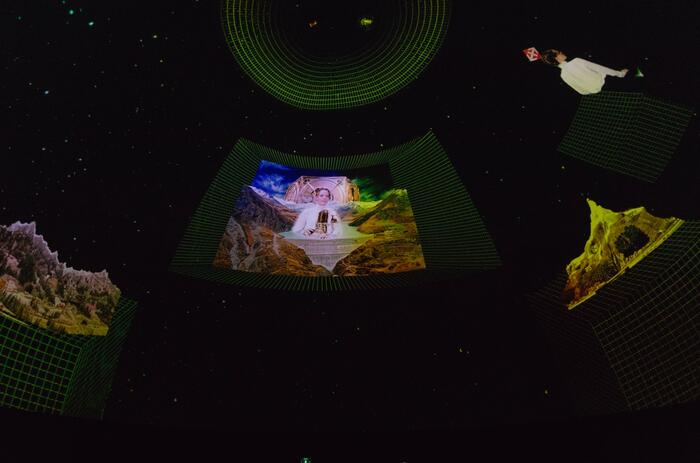
The Venice Biennale 2024 offers an exceptional platform for examining the challenges and opportunities facing the future. The pavilions of Japan, Germany, Switzerland and Hungary trace different forms of looking at and thinking about the world to come, projecting visions of the environment, equilibrium, adaptation, world order and, of course, collective memory.
POSSIBLE FUTURES AT THE VENICE BIENNALE
The Venice Biennale 2024 offers an exceptional platform for examining the challenges and opportunities facing the future. The pavilions of Japan, Germany, Switzerland and Hungary trace different forms of looking at and thinking about the world to come, projecting visions of the environment, equilibrium, adaptation, world order and, of course, collective memory.

The first half of the year concluded on a low note, and as the art market gets ready to gear up for the last semester, a clearer picture of the challenges faced is emerging.
THE START OF THE SEASON
The first half of the year concluded on a low note, and as the art market gets ready to gear up for the last semester, a clearer picture of the challenges faced is emerging.

The Mexico Pavilion at the Venice Biennale 2024 proposes an immersive experience that invites the viewer to reflect on the act of migrating and its impact on identity and sense of belonging. As we marched away, we were always coming back is Erick Meyenberg's project curated by Tania Ragasol. It includes elements created in Mexico, Italy and Albania.
THE PATH OF MEMORIES – MEXICO AT THE BIENNALE
The Mexico Pavilion at the Venice Biennale 2024 proposes an immersive experience that invites the viewer to reflect on the act of migrating and its impact on identity and sense of belonging. As we marched away, we were always coming back is Erick Meyenberg's project curated by Tania Ragasol. It includes elements created in Mexico, Italy and Albania.

Why highlight stories that often remain on the periphery of artistic discourse? Adriano Pedrosa justifies his curatorial decision with works by 331 artists -mostly from the global south- that open the way to powerful narratives. Finally, we see the axis being twisted. It is difficult to escape the white gaze, more so to move authentically through a Eurocentric space. Given this, the communicative reach of figuration serves to challenge the symbolic order of domination and destabilize the colonial project. The stories that are made explicit and the narratives of magic and everyday life help to recognize without revictimizing.
STORIES FROM THE SOUTH – THE VENICE BIENNALE TURNS AROUND ITS AXIS
Why highlight stories that often remain on the periphery of artistic discourse? Adriano Pedrosa justifies his curatorial decision with works by 331 artists -mostly from the global south- that open the way to powerful narratives. Finally, we see the axis being twisted. It is difficult to escape the white gaze, more so to move authentically through a Eurocentric space. Given this, the communicative reach of figuration serves to challenge the symbolic order of domination and destabilize the colonial project. The stories that are made explicit and the narratives of magic and everyday life help to recognize without revictimizing.

The voices of Latin American artists emerge strongly in this 2024 edition of the Venice Biennale. Claudia Alarcón, Julia Isídrez and Juana Marta Rodas, Ana Segovia, Frieda Toranzo Jaeger and Claudia Andújar lead viewers on a profound journey through their cultural heritage and unique artistic practices.
FIVE LATIN AMERICAN ARTISTS EXHIBITING FOR THE FIRST TIME AT THE VENICE BIENNALE
The voices of Latin American artists emerge strongly in this 2024 edition of the Venice Biennale. Claudia Alarcón, Julia Isídrez and Juana Marta Rodas, Ana Segovia, Frieda Toranzo Jaeger and Claudia Andújar lead viewers on a profound journey through their cultural heritage and unique artistic practices.
It takes an Island to Feel this Good is Darja Bajagić’s exhibition for the Montenegro pavilion at Venice Biennale 2024. Curated by Ana Simona Zelenović and organized by the Museum of Contemporary Art of Montenegro at the initiative of commissioner Vladislav Šćepanović, the exhibition will present a critical consideration of the culture of collective memory and the relationship to shared historical heritage.
ICONOGRAPHY, MEMORY AND HISTORY - THE MONTENEGRO PAVILION
It takes an Island to Feel this Good is Darja Bajagić’s exhibition for the Montenegro pavilion at Venice Biennale 2024. Curated by Ana Simona Zelenović and organized by the Museum of Contemporary Art of Montenegro at the initiative of commissioner Vladislav Šćepanović, the exhibition will present a critical consideration of the culture of collective memory and the relationship to shared historical heritage.

The monumental commission by British artist John Akomfrah RA for the 2024 Venice Biennale is a multi-layered exhibition which encourages visitors to experience the British Pavilion’s 19th century neoclassical building in a new way.
THE SOUNDS OF TIME – UNITED KINGDOM AT THE VENICE BIENNALE
The monumental commission by British artist John Akomfrah RA for the 2024 Venice Biennale is a multi-layered exhibition which encourages visitors to experience the British Pavilion’s 19th century neoclassical building in a new way.

The 2024 Venice Biennale has taken a profound interest on cyclical themes, with water emerging as a dominant motif across exhibitions. In resonance to Pedrosa’s title for this year ‘Stranieri Ovunque’, we see water as a dominant locus for the subjects of travel, shared heritage and fluctuation. On itself, water is seen (as both a vital resource and a destructive force) at the heart of the pavilions representing Greece, France, and in Otero Torres’ Arsenale installation, Aguacero. These exhibitions delve into water’s duality: as a life-giver and a potential destroyer, as a symbol of both division and connection.
WATER, CYCLES AND TRANSFORMATION AT THE VENICE BIENNALE
The 2024 Venice Biennale has taken a profound interest on cyclical themes, with water emerging as a dominant motif across exhibitions. In resonance to Pedrosa’s title for this year ‘Stranieri Ovunque’, we see water as a dominant locus for the subjects of travel, shared heritage and fluctuation. On itself, water is seen (as both a vital resource and a destructive force) at the heart of the pavilions representing Greece, France, and in Otero Torres’ Arsenale installation, Aguacero. These exhibitions delve into water’s duality: as a life-giver and a potential destroyer, as a symbol of both division and connection.

The section dedicated to abstraction in the Strangers Everywhere / Stranieri Ouvunque exhibition at the Venice Biennale 2024 explores how artists from the Global South -particularly those from Latin America- pursued less rigorous forms, undulating lines and a vibrant color palette stemming from references of their own.
THE OTHER FORMS OF ABSTRACTION IN LATIN AMERICA
The section dedicated to abstraction in the Strangers Everywhere / Stranieri Ouvunque exhibition at the Venice Biennale 2024 explores how artists from the Global South -particularly those from Latin America- pursued less rigorous forms, undulating lines and a vibrant color palette stemming from references of their own.

The Venice Biennale 2024 offers an exceptional platform for examining the challenges and opportunities facing the future. The pavilions of Japan, Germany, Switzerland and Hungary trace different forms of looking at and thinking about the world to come, projecting visions of the environment, equilibrium, adaptation, world order and, of course, collective memory.
POSSIBLE FUTURES AT THE VENICE BIENNALE
The Venice Biennale 2024 offers an exceptional platform for examining the challenges and opportunities facing the future. The pavilions of Japan, Germany, Switzerland and Hungary trace different forms of looking at and thinking about the world to come, projecting visions of the environment, equilibrium, adaptation, world order and, of course, collective memory.

The first half of the year concluded on a low note, and as the art market gets ready to gear up for the last semester, a clearer picture of the challenges faced is emerging.
THE START OF THE SEASON
The first half of the year concluded on a low note, and as the art market gets ready to gear up for the last semester, a clearer picture of the challenges faced is emerging.

The Mexico Pavilion at the Venice Biennale 2024 proposes an immersive experience that invites the viewer to reflect on the act of migrating and its impact on identity and sense of belonging. As we marched away, we were always coming back is Erick Meyenberg's project curated by Tania Ragasol. It includes elements created in Mexico, Italy and Albania.
THE PATH OF MEMORIES – MEXICO AT THE BIENNALE
The Mexico Pavilion at the Venice Biennale 2024 proposes an immersive experience that invites the viewer to reflect on the act of migrating and its impact on identity and sense of belonging. As we marched away, we were always coming back is Erick Meyenberg's project curated by Tania Ragasol. It includes elements created in Mexico, Italy and Albania.

Why highlight stories that often remain on the periphery of artistic discourse? Adriano Pedrosa justifies his curatorial decision with works by 331 artists -mostly from the global south- that open the way to powerful narratives. Finally, we see the axis being twisted. It is difficult to escape the white gaze, more so to move authentically through a Eurocentric space. Given this, the communicative reach of figuration serves to challenge the symbolic order of domination and destabilize the colonial project. The stories that are made explicit and the narratives of magic and everyday life help to recognize without revictimizing.
STORIES FROM THE SOUTH – THE VENICE BIENNALE TURNS AROUND ITS AXIS
Why highlight stories that often remain on the periphery of artistic discourse? Adriano Pedrosa justifies his curatorial decision with works by 331 artists -mostly from the global south- that open the way to powerful narratives. Finally, we see the axis being twisted. It is difficult to escape the white gaze, more so to move authentically through a Eurocentric space. Given this, the communicative reach of figuration serves to challenge the symbolic order of domination and destabilize the colonial project. The stories that are made explicit and the narratives of magic and everyday life help to recognize without revictimizing.

The voices of Latin American artists emerge strongly in this 2024 edition of the Venice Biennale. Claudia Alarcón, Julia Isídrez and Juana Marta Rodas, Ana Segovia, Frieda Toranzo Jaeger and Claudia Andújar lead viewers on a profound journey through their cultural heritage and unique artistic practices.
FIVE LATIN AMERICAN ARTISTS EXHIBITING FOR THE FIRST TIME AT THE VENICE BIENNALE
The voices of Latin American artists emerge strongly in this 2024 edition of the Venice Biennale. Claudia Alarcón, Julia Isídrez and Juana Marta Rodas, Ana Segovia, Frieda Toranzo Jaeger and Claudia Andújar lead viewers on a profound journey through their cultural heritage and unique artistic practices.
It takes an Island to Feel this Good is Darja Bajagić’s exhibition for the Montenegro pavilion at Venice Biennale 2024. Curated by Ana Simona Zelenović and organized by the Museum of Contemporary Art of Montenegro at the initiative of commissioner Vladislav Šćepanović, the exhibition will present a critical consideration of the culture of collective memory and the relationship to shared historical heritage.
ICONOGRAPHY, MEMORY AND HISTORY - THE MONTENEGRO PAVILION
It takes an Island to Feel this Good is Darja Bajagić’s exhibition for the Montenegro pavilion at Venice Biennale 2024. Curated by Ana Simona Zelenović and organized by the Museum of Contemporary Art of Montenegro at the initiative of commissioner Vladislav Šćepanović, the exhibition will present a critical consideration of the culture of collective memory and the relationship to shared historical heritage.

The monumental commission by British artist John Akomfrah RA for the 2024 Venice Biennale is a multi-layered exhibition which encourages visitors to experience the British Pavilion’s 19th century neoclassical building in a new way.
THE SOUNDS OF TIME – UNITED KINGDOM AT THE VENICE BIENNALE
The monumental commission by British artist John Akomfrah RA for the 2024 Venice Biennale is a multi-layered exhibition which encourages visitors to experience the British Pavilion’s 19th century neoclassical building in a new way.

The 2024 Venice Biennale has taken a profound interest on cyclical themes, with water emerging as a dominant motif across exhibitions. In resonance to Pedrosa’s title for this year ‘Stranieri Ovunque’, we see water as a dominant locus for the subjects of travel, shared heritage and fluctuation. On itself, water is seen (as both a vital resource and a destructive force) at the heart of the pavilions representing Greece, France, and in Otero Torres’ Arsenale installation, Aguacero. These exhibitions delve into water’s duality: as a life-giver and a potential destroyer, as a symbol of both division and connection.
WATER, CYCLES AND TRANSFORMATION AT THE VENICE BIENNALE
The 2024 Venice Biennale has taken a profound interest on cyclical themes, with water emerging as a dominant motif across exhibitions. In resonance to Pedrosa’s title for this year ‘Stranieri Ovunque’, we see water as a dominant locus for the subjects of travel, shared heritage and fluctuation. On itself, water is seen (as both a vital resource and a destructive force) at the heart of the pavilions representing Greece, France, and in Otero Torres’ Arsenale installation, Aguacero. These exhibitions delve into water’s duality: as a life-giver and a potential destroyer, as a symbol of both division and connection.

The section dedicated to abstraction in the Strangers Everywhere / Stranieri Ouvunque exhibition at the Venice Biennale 2024 explores how artists from the Global South -particularly those from Latin America- pursued less rigorous forms, undulating lines and a vibrant color palette stemming from references of their own.
THE OTHER FORMS OF ABSTRACTION IN LATIN AMERICA
The section dedicated to abstraction in the Strangers Everywhere / Stranieri Ouvunque exhibition at the Venice Biennale 2024 explores how artists from the Global South -particularly those from Latin America- pursued less rigorous forms, undulating lines and a vibrant color palette stemming from references of their own.

The Venice Biennale 2024 offers an exceptional platform for examining the challenges and opportunities facing the future. The pavilions of Japan, Germany, Switzerland and Hungary trace different forms of looking at and thinking about the world to come, projecting visions of the environment, equilibrium, adaptation, world order and, of course, collective memory.
POSSIBLE FUTURES AT THE VENICE BIENNALE
The Venice Biennale 2024 offers an exceptional platform for examining the challenges and opportunities facing the future. The pavilions of Japan, Germany, Switzerland and Hungary trace different forms of looking at and thinking about the world to come, projecting visions of the environment, equilibrium, adaptation, world order and, of course, collective memory.

The first half of the year concluded on a low note, and as the art market gets ready to gear up for the last semester, a clearer picture of the challenges faced is emerging.
THE START OF THE SEASON
The first half of the year concluded on a low note, and as the art market gets ready to gear up for the last semester, a clearer picture of the challenges faced is emerging.

The Mexico Pavilion at the Venice Biennale 2024 proposes an immersive experience that invites the viewer to reflect on the act of migrating and its impact on identity and sense of belonging. As we marched away, we were always coming back is Erick Meyenberg's project curated by Tania Ragasol. It includes elements created in Mexico, Italy and Albania.
THE PATH OF MEMORIES – MEXICO AT THE BIENNALE
The Mexico Pavilion at the Venice Biennale 2024 proposes an immersive experience that invites the viewer to reflect on the act of migrating and its impact on identity and sense of belonging. As we marched away, we were always coming back is Erick Meyenberg's project curated by Tania Ragasol. It includes elements created in Mexico, Italy and Albania.

Why highlight stories that often remain on the periphery of artistic discourse? Adriano Pedrosa justifies his curatorial decision with works by 331 artists -mostly from the global south- that open the way to powerful narratives. Finally, we see the axis being twisted. It is difficult to escape the white gaze, more so to move authentically through a Eurocentric space. Given this, the communicative reach of figuration serves to challenge the symbolic order of domination and destabilize the colonial project. The stories that are made explicit and the narratives of magic and everyday life help to recognize without revictimizing.
STORIES FROM THE SOUTH – THE VENICE BIENNALE TURNS AROUND ITS AXIS
Why highlight stories that often remain on the periphery of artistic discourse? Adriano Pedrosa justifies his curatorial decision with works by 331 artists -mostly from the global south- that open the way to powerful narratives. Finally, we see the axis being twisted. It is difficult to escape the white gaze, more so to move authentically through a Eurocentric space. Given this, the communicative reach of figuration serves to challenge the symbolic order of domination and destabilize the colonial project. The stories that are made explicit and the narratives of magic and everyday life help to recognize without revictimizing.

The voices of Latin American artists emerge strongly in this 2024 edition of the Venice Biennale. Claudia Alarcón, Julia Isídrez and Juana Marta Rodas, Ana Segovia, Frieda Toranzo Jaeger and Claudia Andújar lead viewers on a profound journey through their cultural heritage and unique artistic practices.
FIVE LATIN AMERICAN ARTISTS EXHIBITING FOR THE FIRST TIME AT THE VENICE BIENNALE
The voices of Latin American artists emerge strongly in this 2024 edition of the Venice Biennale. Claudia Alarcón, Julia Isídrez and Juana Marta Rodas, Ana Segovia, Frieda Toranzo Jaeger and Claudia Andújar lead viewers on a profound journey through their cultural heritage and unique artistic practices.
It takes an Island to Feel this Good is Darja Bajagić’s exhibition for the Montenegro pavilion at Venice Biennale 2024. Curated by Ana Simona Zelenović and organized by the Museum of Contemporary Art of Montenegro at the initiative of commissioner Vladislav Šćepanović, the exhibition will present a critical consideration of the culture of collective memory and the relationship to shared historical heritage.
ICONOGRAPHY, MEMORY AND HISTORY - THE MONTENEGRO PAVILION
It takes an Island to Feel this Good is Darja Bajagić’s exhibition for the Montenegro pavilion at Venice Biennale 2024. Curated by Ana Simona Zelenović and organized by the Museum of Contemporary Art of Montenegro at the initiative of commissioner Vladislav Šćepanović, the exhibition will present a critical consideration of the culture of collective memory and the relationship to shared historical heritage.

The monumental commission by British artist John Akomfrah RA for the 2024 Venice Biennale is a multi-layered exhibition which encourages visitors to experience the British Pavilion’s 19th century neoclassical building in a new way.
THE SOUNDS OF TIME – UNITED KINGDOM AT THE VENICE BIENNALE
The monumental commission by British artist John Akomfrah RA for the 2024 Venice Biennale is a multi-layered exhibition which encourages visitors to experience the British Pavilion’s 19th century neoclassical building in a new way.

The 2024 Venice Biennale has taken a profound interest on cyclical themes, with water emerging as a dominant motif across exhibitions. In resonance to Pedrosa’s title for this year ‘Stranieri Ovunque’, we see water as a dominant locus for the subjects of travel, shared heritage and fluctuation. On itself, water is seen (as both a vital resource and a destructive force) at the heart of the pavilions representing Greece, France, and in Otero Torres’ Arsenale installation, Aguacero. These exhibitions delve into water’s duality: as a life-giver and a potential destroyer, as a symbol of both division and connection.
WATER, CYCLES AND TRANSFORMATION AT THE VENICE BIENNALE
The 2024 Venice Biennale has taken a profound interest on cyclical themes, with water emerging as a dominant motif across exhibitions. In resonance to Pedrosa’s title for this year ‘Stranieri Ovunque’, we see water as a dominant locus for the subjects of travel, shared heritage and fluctuation. On itself, water is seen (as both a vital resource and a destructive force) at the heart of the pavilions representing Greece, France, and in Otero Torres’ Arsenale installation, Aguacero. These exhibitions delve into water’s duality: as a life-giver and a potential destroyer, as a symbol of both division and connection.

The section dedicated to abstraction in the Strangers Everywhere / Stranieri Ouvunque exhibition at the Venice Biennale 2024 explores how artists from the Global South -particularly those from Latin America- pursued less rigorous forms, undulating lines and a vibrant color palette stemming from references of their own.
THE OTHER FORMS OF ABSTRACTION IN LATIN AMERICA
The section dedicated to abstraction in the Strangers Everywhere / Stranieri Ouvunque exhibition at the Venice Biennale 2024 explores how artists from the Global South -particularly those from Latin America- pursued less rigorous forms, undulating lines and a vibrant color palette stemming from references of their own.

The Venice Biennale 2024 offers an exceptional platform for examining the challenges and opportunities facing the future. The pavilions of Japan, Germany, Switzerland and Hungary trace different forms of looking at and thinking about the world to come, projecting visions of the environment, equilibrium, adaptation, world order and, of course, collective memory.
POSSIBLE FUTURES AT THE VENICE BIENNALE
The Venice Biennale 2024 offers an exceptional platform for examining the challenges and opportunities facing the future. The pavilions of Japan, Germany, Switzerland and Hungary trace different forms of looking at and thinking about the world to come, projecting visions of the environment, equilibrium, adaptation, world order and, of course, collective memory.

The first half of the year concluded on a low note, and as the art market gets ready to gear up for the last semester, a clearer picture of the challenges faced is emerging.
THE START OF THE SEASON
The first half of the year concluded on a low note, and as the art market gets ready to gear up for the last semester, a clearer picture of the challenges faced is emerging.

The Mexico Pavilion at the Venice Biennale 2024 proposes an immersive experience that invites the viewer to reflect on the act of migrating and its impact on identity and sense of belonging. As we marched away, we were always coming back is Erick Meyenberg's project curated by Tania Ragasol. It includes elements created in Mexico, Italy and Albania.
THE PATH OF MEMORIES – MEXICO AT THE BIENNALE
The Mexico Pavilion at the Venice Biennale 2024 proposes an immersive experience that invites the viewer to reflect on the act of migrating and its impact on identity and sense of belonging. As we marched away, we were always coming back is Erick Meyenberg's project curated by Tania Ragasol. It includes elements created in Mexico, Italy and Albania.

Why highlight stories that often remain on the periphery of artistic discourse? Adriano Pedrosa justifies his curatorial decision with works by 331 artists -mostly from the global south- that open the way to powerful narratives. Finally, we see the axis being twisted. It is difficult to escape the white gaze, more so to move authentically through a Eurocentric space. Given this, the communicative reach of figuration serves to challenge the symbolic order of domination and destabilize the colonial project. The stories that are made explicit and the narratives of magic and everyday life help to recognize without revictimizing.
STORIES FROM THE SOUTH – THE VENICE BIENNALE TURNS AROUND ITS AXIS
Why highlight stories that often remain on the periphery of artistic discourse? Adriano Pedrosa justifies his curatorial decision with works by 331 artists -mostly from the global south- that open the way to powerful narratives. Finally, we see the axis being twisted. It is difficult to escape the white gaze, more so to move authentically through a Eurocentric space. Given this, the communicative reach of figuration serves to challenge the symbolic order of domination and destabilize the colonial project. The stories that are made explicit and the narratives of magic and everyday life help to recognize without revictimizing.

The voices of Latin American artists emerge strongly in this 2024 edition of the Venice Biennale. Claudia Alarcón, Julia Isídrez and Juana Marta Rodas, Ana Segovia, Frieda Toranzo Jaeger and Claudia Andújar lead viewers on a profound journey through their cultural heritage and unique artistic practices.
FIVE LATIN AMERICAN ARTISTS EXHIBITING FOR THE FIRST TIME AT THE VENICE BIENNALE
The voices of Latin American artists emerge strongly in this 2024 edition of the Venice Biennale. Claudia Alarcón, Julia Isídrez and Juana Marta Rodas, Ana Segovia, Frieda Toranzo Jaeger and Claudia Andújar lead viewers on a profound journey through their cultural heritage and unique artistic practices.
It takes an Island to Feel this Good is Darja Bajagić’s exhibition for the Montenegro pavilion at Venice Biennale 2024. Curated by Ana Simona Zelenović and organized by the Museum of Contemporary Art of Montenegro at the initiative of commissioner Vladislav Šćepanović, the exhibition will present a critical consideration of the culture of collective memory and the relationship to shared historical heritage.
ICONOGRAPHY, MEMORY AND HISTORY - THE MONTENEGRO PAVILION
It takes an Island to Feel this Good is Darja Bajagić’s exhibition for the Montenegro pavilion at Venice Biennale 2024. Curated by Ana Simona Zelenović and organized by the Museum of Contemporary Art of Montenegro at the initiative of commissioner Vladislav Šćepanović, the exhibition will present a critical consideration of the culture of collective memory and the relationship to shared historical heritage.

The monumental commission by British artist John Akomfrah RA for the 2024 Venice Biennale is a multi-layered exhibition which encourages visitors to experience the British Pavilion’s 19th century neoclassical building in a new way.
THE SOUNDS OF TIME – UNITED KINGDOM AT THE VENICE BIENNALE
The monumental commission by British artist John Akomfrah RA for the 2024 Venice Biennale is a multi-layered exhibition which encourages visitors to experience the British Pavilion’s 19th century neoclassical building in a new way.

The 2024 Venice Biennale has taken a profound interest on cyclical themes, with water emerging as a dominant motif across exhibitions. In resonance to Pedrosa’s title for this year ‘Stranieri Ovunque’, we see water as a dominant locus for the subjects of travel, shared heritage and fluctuation. On itself, water is seen (as both a vital resource and a destructive force) at the heart of the pavilions representing Greece, France, and in Otero Torres’ Arsenale installation, Aguacero. These exhibitions delve into water’s duality: as a life-giver and a potential destroyer, as a symbol of both division and connection.
WATER, CYCLES AND TRANSFORMATION AT THE VENICE BIENNALE
The 2024 Venice Biennale has taken a profound interest on cyclical themes, with water emerging as a dominant motif across exhibitions. In resonance to Pedrosa’s title for this year ‘Stranieri Ovunque’, we see water as a dominant locus for the subjects of travel, shared heritage and fluctuation. On itself, water is seen (as both a vital resource and a destructive force) at the heart of the pavilions representing Greece, France, and in Otero Torres’ Arsenale installation, Aguacero. These exhibitions delve into water’s duality: as a life-giver and a potential destroyer, as a symbol of both division and connection.

The section dedicated to abstraction in the Strangers Everywhere / Stranieri Ouvunque exhibition at the Venice Biennale 2024 explores how artists from the Global South -particularly those from Latin America- pursued less rigorous forms, undulating lines and a vibrant color palette stemming from references of their own.
THE OTHER FORMS OF ABSTRACTION IN LATIN AMERICA
The section dedicated to abstraction in the Strangers Everywhere / Stranieri Ouvunque exhibition at the Venice Biennale 2024 explores how artists from the Global South -particularly those from Latin America- pursued less rigorous forms, undulating lines and a vibrant color palette stemming from references of their own.

The Venice Biennale 2024 offers an exceptional platform for examining the challenges and opportunities facing the future. The pavilions of Japan, Germany, Switzerland and Hungary trace different forms of looking at and thinking about the world to come, projecting visions of the environment, equilibrium, adaptation, world order and, of course, collective memory.
POSSIBLE FUTURES AT THE VENICE BIENNALE
The Venice Biennale 2024 offers an exceptional platform for examining the challenges and opportunities facing the future. The pavilions of Japan, Germany, Switzerland and Hungary trace different forms of looking at and thinking about the world to come, projecting visions of the environment, equilibrium, adaptation, world order and, of course, collective memory.

